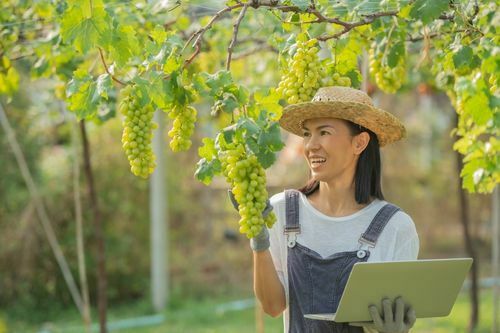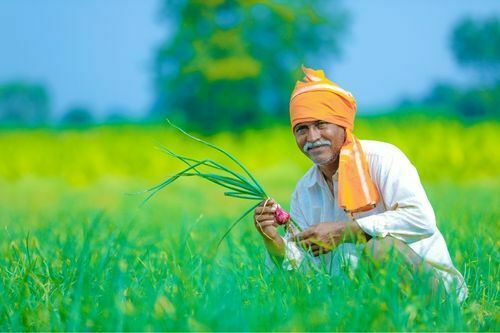Table of Contents
- Study of fruits | An overview of the study of pomology
- Study of fruits | What does pomology stand for?
- Study of fruits | Importance of pomology in agriculture and food
- Study of fruits | What is the role of a pomologist?
- Study of fruits | Types of pomologists
- Study of fruits | Skills you need to become a pomologist
- Study of fruits | Economic importance of pomology
- Key takeaways
- FAQs
Study of fruits | An overview of the study of pomology
Fruits and vegetables are high in vitamins and minerals. There is no better nutritional source than fruits and vegetables containing vitamins A, C, and E and magnesium, zinc, phosphorous, and folic acid. The study of fruits will reveal all efforts behind making a fruit.
Pomology is a branch of horticulture that focuses on the cultivation, production, harvest, and storage of fruit, especially tree fruits. Fruit orchards can be found worldwide, and tree fruits are a major industry in many countries, making pomology especially vital.
The word “pomology” comes from the Latin word for “an apple,” but pomology is about a lot more than just apples. Any number of fruit trees can be included in a survey of pomology, like apricots, pears, plums, peaches, cherries, nectarines, and avocados. Pomologists also research tree nuts like almonds, walnuts, and pecans.
Study of fruits | What does pomology stand for?

Pomology is a horticultural science that studies fruit and nut crops. It focuses on fruit tree improvement to increase production yield and quality. Pomologists cultivate fruit trees for disease and pest resistance, faster growth rates, and good harvests in this branch of horticulture.
Pomology entails improving fruit yield in terms of quality and production cost. Pomology ensures that the fruit grown has the best flavor and texture possible and is free of pests and pathogens. The science investigates fruit transportation and processing methods to ensure that the harvest suffers as few losses as possible.
Study of fruits | Importance of pomology in agriculture and food
Pomology is responsible for expanding fruit orchard programs in the United States during the mid-nineteenth century as a study of providing the growing population with fresh and crisp fruit. Pomology has contributed to the expansion of the agricultural sector and the number of cultivars available on the market today.
As USDA horticulturists studied and imported foreign fruit varieties, increasing demand for fruit diversity led to developing experimental lots for fruit cultivation in agricultural colleges. Pomology now has the most significant impact on food production, resulting in-
- Crop yields are high.
- Agro-industry supplier (fruit jams, preserved and dried fruit, nuts, nut oils, etc.).
- Improvement in soil health with perennial irrigation.
- Fruits and nuts have a high nutritional content.
- Increased fruit and fruit product exports.
- There is development in optimum growing techniques.
Study of fruits | What is the role of a pomologist?
Pomologists are in charge of harvesting, trimming, and transplanting plants and monitoring the growth of various fruit and nut trees. Simultaneously, pomologists are investigating new methods of producing environmentally friendly crops.
Pomologists also investigate fertilization and replanting techniques to determine the most effective in keeping plants healthy and active. Pests, infections, diseases, and extreme weather conditions are all examined similarly.
1. Inspection
Pomologists look for harmful pests, infestations, and growth rates in fruit and nut trees. Pomologists assess the efficacy of medications and plant nutrition.
2. Organizing
The person who chooses a career as a pomologist must plan, organize and supervise all activities. Pomologists organize the sale and purchase of farm equipment, crops, household goods, and animals.
Study of fruits | Types of pomologists
Below are the types of pomologist careers you can opt for in the near future.
1. Agricultural officer
Agriculture officers ensure that all farming activities and goods comply with state and local regulations. Agriculture officers are knowledgeable in chemistry, biology, economics, geology, geography, and genetics, among other things. Agricultural officers ensure that all farming operations and products comply with state and municipal laws.
2. Agricultural inspector
Agriculture inspectors monitor food production practices such as cultivating, fishing, and planting to ensure that consumer-purchased food is safe to eat. Agricultural inspectors ensure that businesses adhere to federal and state regulations governing the hygiene, consistency, and protection of meat, poultry, dairy products, fruits, and vegetables. They also inspect food and meat processing plants to ensure they are up to code.
3. Farmer

A farmer is someone who works in agriculture and produces a variety of food products for human and animal consumption. Farmers manage all the crops and animals we rely on to survive. A farmer’s main goal in the making a living and feeding the population is to grow a good harvest and healthy animals.
Study of fruits | Skills you need to become a pomologist
You must acquire the below skills to become a pomologist.
1. Communication ability
A pomologist must be able to communicate effectively and efficiently. Pomologists must interact with people from various departments. Pomologists must communicate effectively to interact with local farmers and communicate effective cultivation and pest control methods.
2. Active learning
Pomologists must demonstrate dynamic understanding because they work in a field where people frequently establish their benchmark, requiring them to come up with breakthroughs that allow them to mitigate the risk of reduced fruit production and losses.
3. Science skills
Candidates must have strong analytical skills that allow them to understand the needs of each plant. By science skills, we mean that the candidates should be familiar with the theoretical aspects of plant genetics, which serve as the foundation for most research.
Study of fruits | Economic importance of pomology
Pomology benefits both fruit growers and consumers by optimizing crops for desirable traits. Fruit and nut crops can produce varieties with specific growing requirements or characteristics, according to pomology.
Pomology research has been used for decades to cultivate different varieties of apples, such as the Honey Crisp and Arctic Golden, in the United States. The reason to breed the Arctic Golden apple was to resist browning when sliced, preserving the fruit’s nutritional value. Other varieties are cultivated mainly for their desirable sweetness, aroma, or crisp flesh.
Key takeaways
- Pomology, also known as fruit science, is a branch of botany that studies crop cultivation. Pomology improves the development of fruits and nuts from germination to postharvest quality to meet the increased interest in fruit varieties.
- Pomology provides farmers and growers with valuable information on how to maximize yields.
- To become a pomologist, you must have excellent communication skills, an urge to learn, and good hold-over science skills.
Did you find this blog informative? If so, please share your thoughts in the comments below. Click here to contact us for more information on the study of fruits. We would be happy to assist you with your queries.
Liked this blog? Read next: MSc Botany: Course, syllabus, colleges, eligibility & more
FAQs
Q1. Who is known as the father of pomology?
Answer – Charles Downing, a pomologist from the United States, is known as the ‘father of pomology.’
Q2. What is the study of vegetables called?
Answer – Olericulture is vegetable gardening that focuses on growing non-woody plants for human consumption. Olericulture is the cultivation of plants for the production of edible products.
Q3. What are some examples of pomology?
Answer – Pomology grows, harvests, stores, processes, and sells fruit and nut crops. Peaches, apples, and pears are examples of large fruits. Small fruits include strawberries, raspberries, and blueberries.







